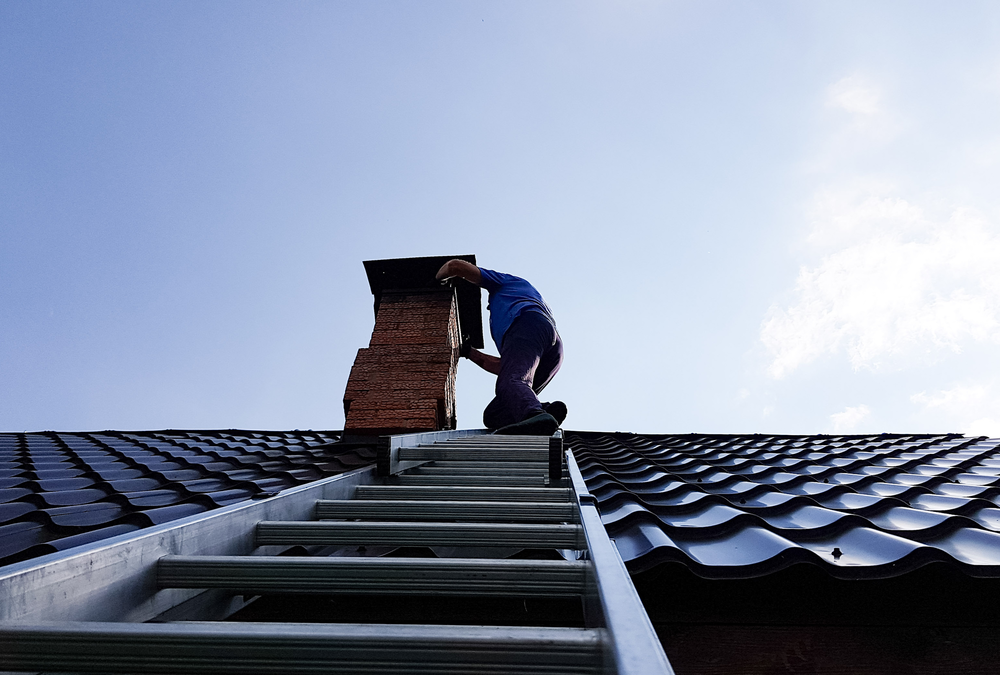CHIMNEY MAINTENANCE GUIDE
An essential maintenance task before the winter sets in is to ensure that the chimney is safe and ready to use.
As the temperature falls and the weather turns cooler, homeowners begin to prep up their homes for the harsh winter season. An essential maintenance task before the winter sets in is to ensure that the chimney is safe and ready to use. Fireplace or chimney issues lead to thousands of residential fires in the US annually. Proper chimney maintenance is essential to avoid fire risk and ensure superior chimney performance through the winter.
Consider giving the chimney a little TLC before lighting up the fireplace and enjoying the warmth. Here is an essential chimney maintenance checklist for fireplace owners to follow to prevent health and safety hazards:
A thorough inspection
The first chimney maintenance step is to inspect the chimney from the outside. As the exterior structure remain exposed to harsh weather conditions, it is essential to look for any signs of damage, weakness, or disrepair. Also, check the flue for cracks and spalling and mortar for deterioration. Finally, remove any leftover ash from the last season, trim the tree branches hanging close to the chimney and roofline, and address any repair issues before they turn costly and pose a safety threat.
Clean the flue
One of the most common reasons behind chimney fires is the creosote buildup due to regular chimney use. Inspect the flue for soot, debris, creosote buildup, and any hole, cracks, or separation. Cleaning the flue to remove the hazardous buildup and repairing any damage on time will ensure safe chimney functioning.
Check the chimney cap and crown
Ensure the chimney cap is not cracked or missing and fits well, and replace it if necessary. If the chimney is uncapped, install one for protection from rain, snow, wild animals, and debris and prevent the sparks and embers from escaping. Check the chimney crown for cracks and damage.
Look for signs of a leak
Some signs of a leaky chimney include rust, musty odor, stains or dampness around the chimney, discolored bricks, water in the firebox, and the presence of moss. In addition, a chimney may leak due to brick saturation, lack of cover, cracks in the crown, damaged flue liner, loose, warped, or bent flashing.
Check the damper
Inspect the damper to ensure it works correctly and maintains a tight seal. A damper can wear out over time and increase energy costs. Repair or replace the faulty or malfunctioning damper before using the fireplace for the season.
Burn suitable wood and store it properly
For those with a wood fireplace, purchase and burn only well-seasoned, quality wood in the fireplace for proper chimney functioning. Burning treated or unseasoned wood can lead to unpleasant odors, more creosote buildup, and various chimney issues.
Schedule a periodical inspection and cleaning
The Chimney Safety Institute of America (CSIA) recommends an annual chimney inspection and cleaning by a professional and certified chimney sweep. Trained and qualified professionals thoroughly examine the chimney structure to spot and fix problems before they turn severe. They also perform extensive cleaning to remove soot, creosote buildup, dirt, grime, and other obstructions that may hinder chimney performance.
Hire a local chimney inspection and cleaning service to prevent fire risk and enjoy the warmth of the fireplace in the winter without any stress.

